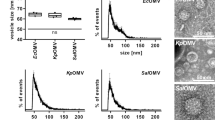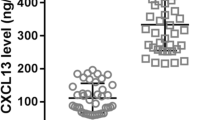Abstract
Endothelial barrier breakdown contributes to organ failure in sepsis. The key mechanism by which the potent sepsis inductor lipopolysaccharide (LPS) disrupts the endothelial barrier is controversial. Here, we tested the hypothesis that NF-κB activation is critically involved in endothelial barrier breakdown. Application of LPS to monolayers of porcine pulmonary artery endothelial cells (PAEC) and human dermal microvascular endothelial cells (HDMEC) induced a rapid and sustained activation of NF-κB as revealed by translocation of its subunit p65 into the nuclei in nuclear extraction assays and by immunostaining. Measurements of transendothelial electrical resistance (TER) and intercellular gap formation demonstrated significant breakdown of endothelial barrier properties following LPS treatment for 3 h. Interestingly, monolayers recovered spontaneously beginning after 10 h. Increased cAMP prevented LPS-induced loss of endothelial barrier properties, but did not block NF-κB activation. Application of the cell-permeable NEMO-binding domain (NBD) synthetic peptide was effective to prevent NF-κB activation, but did neither block LPS-induced loss of TER nor intercellular gap formation. NBD peptide alone did not alter endothelial barrier properties, but enhanced the barrier-compromising effects when applied in combination with LPS. Similarly, siRNA-mediated knock-down of p65 in HDMECs did not prevent LPS-induced barrier breakdown. Known targets of NF-κB-derived protein expression of caveolin or vasodilator-stimulated phosphoprotein (VASP) remained unaltered by LPS treatment of endothelial cells. In summary, our data indicate that NF-κB activation by LPS is not critically involved in disruption of endothelial barrier properties. Rather, our data suggest that NF-κB activation acts as a part of a rescue mechanism.









Similar content being viewed by others
References
Baumer Y, Burger S, Curry FE, Golenhofen N, Drenckhahn D, Waschke J (2008) Differential role of Rho GTPases in endothelial barrier regulation dependent on endothelial cell origin. Histochem Cell Biol 129(2):179–191
Bogatcheva NV, Zemskova MA, Poirier C, Mirzapoiazova T, Kolosova I, Bresnick AR, Verin AD (2011) The suppression of myosin light chain (MLC) phosphorylation during the response to lipopolysaccharide (LPS): beneficial or detrimental to endothelial barrier? J Cell Physiol 226(12):3132–3146
Bonizzi G, Karin M (2004) The two NF-kappaB activation pathways and their role in innate and adaptive immunity. Trends Immunol 25(6):280–288
Cinel I, Dellinger RP (2007) Advances in pathogenesis and management of sepsis. Curr Opin Infect Dis 20(4):345–352
Corsini E, Viviani B, Marinovich M, Galli CL (1997) Role of mitochondria and calcium ions in tributyltin-induced gene regulatory pathways. Toxicol Appl Pharmacol 145(1):74–81
Dofferhoff AS, Nijland JH, de Vries-Hospers HG, Mulder PO, Weits J, Bom VJ (1991) Effects of different types and combinations of antimicrobial agents on endotoxin release from gram-negative bacteria: an in-vitro and in-vivo study. Scand J Infect Dis 23(6):745–754
Gao J, Zhao W, Zhou L, Zeng B, Yao S, Liu D, Chen Z (2006) Protective effects of propofol on lipopolysaccharide-activated endothelial cell barrier dysfunction. Inflamm Res 55(9):385–392
Garrean S, Gao X-P, Brovkovych V, Shimizu J, Zhao Y-Y, Vogel SM, Malik AB (2006) Caveolin-1 regulates NF-Î kappaB activation and lung inflammatory response to sepsis induced by lipopolysaccharide. J Immunol 177(7):4853–4860
Ghosh S, May MJ, Kopp EB (1998) NF-kappa B and Rel proteins: evolutionarily conserved mediators of immune responses. Annu Rev Immunol 16:225–260
Gong P, Angelini DJ, Yang S, Xia G, Cross AS, Mann D, Bannerman DD, Vogel SN, Goldblum SE (2008) TLR4 signaling is coupled to SRC family kinase activation, tyrosine phosphorylation of Zonula adherens proteins, and opening of the paracellular pathway in human lung microvascular endothelia. J Biol Chem 283(19):13437–13449
He F, Peng J, Deng XL, Yang LF, Wu LW, Zhang CL, Yin F (2011) RHOA and NF-KAPPAB are involved in lipopolysaccharide-induced brain microvascular cell line hyperpermeability. Neuroscience 11(188):35–47
Henes J, Schmit MA, Morote-Garcia JC, Mirakaj V, Kohler D, Glover L, Eldh T, Walter U, Karhausen J, Colgan SP, Rosenberger P (2009) Inflammation-associated repression of vasodilator-stimulated phosphoprotein (VASP) reduces alveolar-capillary barrier function during acute lung injury. FASEB J 23(12):4244–4255
Herkenham M, Rathore P, Brown P, Listwak SJ (2011) Cautionary notes on the use of NF-κB p65 and p50 antibodies for CNS studies. J Neuroinflamm 8:141
Hippenstiel S, Schmeck B, Seybold J, Krüll M, Eichel-Streiber CV, Suttorp N (2002) Reduction of tumor necrosis factor-alpha (TNF-α) related nuclear factor-kappaB (NF-κB) translocation but not inhibitor kappa-B (Iκ-B)-degradation by Rho protein inhibition in human endothelial cells. Biochem Pharmacol 64(5–6):971–977
Irwin DC, Tissot van Patot MC, Tucker A, Bowen R (2005) Direct ANP inhibition of hypoxia-induced inflammatory pathways in pulmonary microvascular and macrovascular endothelial monolayers. Am J Physiol Lung Cell Mol Physiol 288(5):L849–L859
Koga S, Morris S, Ogawa S, Liao H, Bilezikian JP, Chen G, Thompson WJ, Ashikaga T, Brett J, Stern DM et al (1995) TNF modulates endothelial properties by decreasing cAMP. Am J Physiol 268(5 Pt 1):C1104–C1113
Krishnaswamy G, Kelley J, Yerra L, Smith JK, Chi DS (1999) Human endothelium as a source of multifunctional cytokines: molecular regulation and possible role in human disease. J Interferon Cytokine Res 19(2):91–104
Kyhse-Andersen J (1984) Electroblotting of multiple gels: a simple apparatus without buffer tank for rapid transfer of proteins from polyacrylamide to nitrocellulose. J Biochem Biophys Methods 10(3–4):203–209
Laemmli UK (1970) Cleavage of structural proteins during the assembly of the head of bacteriophage T4. Nature 227(5259):680–685
Lee WL, Slutsky AS (2010) Sepsis and endothelial permeability. N Engl J Med 363(7):689–691
Levy MM, Dellinger RP, Townsend SR, Linde-Zwirble WT, Marshall JC, Bion J, Schorr C, Artigas A, Ramsay G, Beale R, Parker MM, Gerlach H, Reinhart K, Silva E, Harvey M, Regan S, Angus DC, Surviving Sepsis Campaign (2010) The Surviving Sepsis Campaign: results of an international guideline-based performance improvement program targeting severe sepsis. Crit Care Med 38(2):367–374
Li Q, Verma IM (2002) NF-kappaB regulation in the immune system. Nat Rev 2(10):725–734
Lu Y-C, Yeh W-C, Ohashi PS (2008) LPS/TLR4 signal transduction pathway. Cytokine 42(2):145–151
May MJ, D’Acquisto F, Madge LA, Glockner J, Pober JS, Ghosh S (2000) Selective inhibition of NF-kappa B activation by a peptide that blocks the interaction of NEMO with the Ikappa B kinase complex. Science 289(5484):1550–1554
Mehta D, Malik AB (2006) Signaling mechanisms regulating endothelial permeability. Physiol Rev 86(1):279–367
Bogatcheva NV, Zemskova MA, Kovalenkov Y, Poirier C, Verin AD (2009) Molecular mechanisms mediating protective effect of cAMP on lipopolysaccharide (LPS)-induced human lung microvascular endothelial cells (HLMVEC) hyperpermeability. J Cell Physiol 221(3):750–759
Rauert H, Wicovsky A, Müller N, Siegmund D, Spindler V, Waschke J, Kneitz C, Wajant H (2010) Membrane tumor necrosis factor (TNF) induces p100 processing via TNF receptor-2 (TNFR2). J Biol Chem 285(10):7394–7404
Russell JA (2006) Management of sepsis. N Engl J Med 355(16):1699–1713
Sawyer SJ, Norvell SM, Ponik SM, Pavalko FM (2001) Regulation of PGE2 and PGI2 release from human umbilical vein endothelial cells by actin cytoskeleton. Am J Physiol Cell Physiol 281(3):C1038–C1045
Scheifele DW, Olsen EM, Pendray MR (1985) Endotoxinemia and thrombocytopenia during neonatal necrotizing enterocolitis. Am J Clin Pathol 83(2):227–229
Schick MA, Wunder C, Wollborn J, Roewer N, Waschke J, Germer CT, Schlegel N (2012) Phosphodiesterase-4 inhibition as a therapeutic approach to treat capillary leakage in systemic inflammation. J Physiol [epub ahead of print]
Schlegel N, Baumer Y, Drenckhahn D, Waschke J (2009) Lipopolysaccharide-induced endothelial barrier breakdown is cAMP dependent in vivo and in vitro. Crit Care Med 37(5):1735–1743
Schlegel N, Burger S, Golenhofen N, Walter U, Drenckhahn D, Waschke J (2008) The role of VASP in regulation of cAMP- and Rac 1-mediated endothelial barrier stabilization. Am J Physiol Cell Physiol 294(1):C178–C188
Schlegel N, Waschke J (2009a) Impaired cAMP and Rac 1 signaling contribute to TNF-alpha-induced endothelial barrier breakdown in microvascular endothelium. Microcirculation 16(6):521–533
Schlegel N, Waschke J (2009b) Impaired integrin-mediated adhesion contributes to reduced barrier properties in VASP-deficient microvascular endothelium. J Cell Physiol 220(2):357–366
Schlegel N, Waschke J (2009c) VASP is involved in cAMP-mediated Rac 1 activation in microvascular endothelial cells. Am J Physiol Cell Physiol 296(3):C453–C462
Schlegel N, Waschke J (2010) Vasodilator-stimulated phosphoprotein: crucial for activation of Rac1 in endothelial barrier maintenance. Cardiovasc Res 87(1):1–3
Schnittler HJ, Wilke A, Gress T, Suttorp N, Drenckhahn D (1990) Role of actin and myosin in the control of paracellular permeability in pig, rat and human vascular endothelium. J Physiol 431:379–401
Spehlmann ME, Eckmann L (2009) Nuclear factor-kappa B in intestinal protection and destruction. Curr Opin Gastroenterol 25(2):92–99
Spindler V, Schlegel N, Waschke J (2010) Role of GTPases in control of microvascular permeability. Cardiovasc Res 87(2):243–253
Spindler V, Waschke J Beta-adrenergic stimulation contributes to maintenance of endothelial barrier functions under baseline conditions. Microcirculation 18(2):118–127
Tiruppathi C, Shimizu J, Miyawaki-Shimizu K, Vogel SM, Bair AM, Minshall RD, Predescu D, Malik AB (2008) Role of NF-kappaB-dependent caveolin-1 expression in the mechanism of increased endothelial permeability induced by lipopolysaccharide. J Biol Chem 283(7):4210–4218
Xing J, Birukova AA ANP attenuates inflammatory signaling and Rho pathway of lung endothelial permeability induced by LPS and TNF-alpha. Microvasc Res 79(1):56–62
Ye X, Ding J, Zhou X, Chen G, Liu SF (2008) Divergent roles of endothelial NF-kappaB in multiple organ injury and bacterial clearance in mouse models of sepsis. J Exp Med 205(6):1303–1315
Acknowledgments
We are grateful to Veronika Heimbach, Alexia Witchen and Nadja Niedermeier for skilful technical assistance. These studies were supported by a grant from the Interdisziplinäre Zentrum für Klinische Forschung (IZKF) Z3/2 (N.S.), A102 (N.S. and J.W.) and SFB 688 (J.W.) and DFG 1962/2-1 (N.S.). Grant: These studies were supported by a grant from the Interdisziplinäre Zentrum für Klinische Forschung (IZKF) Z3/2 (N.S.), A102 (N.S. and J.W.), SFB 688 (J.W.), DFG 1962/2-1.
Author information
Authors and Affiliations
Corresponding author
Additional information
N. Schlegel and R. Leweke contributed equally to this work.
Rights and permissions
About this article
Cite this article
Schlegel, N., Leweke, R., Meir, M. et al. Role of NF-κB activation in LPS-induced endothelial barrier breakdown. Histochem Cell Biol 138, 627–641 (2012). https://doi.org/10.1007/s00418-012-0983-7
Accepted:
Published:
Issue Date:
DOI: https://doi.org/10.1007/s00418-012-0983-7




